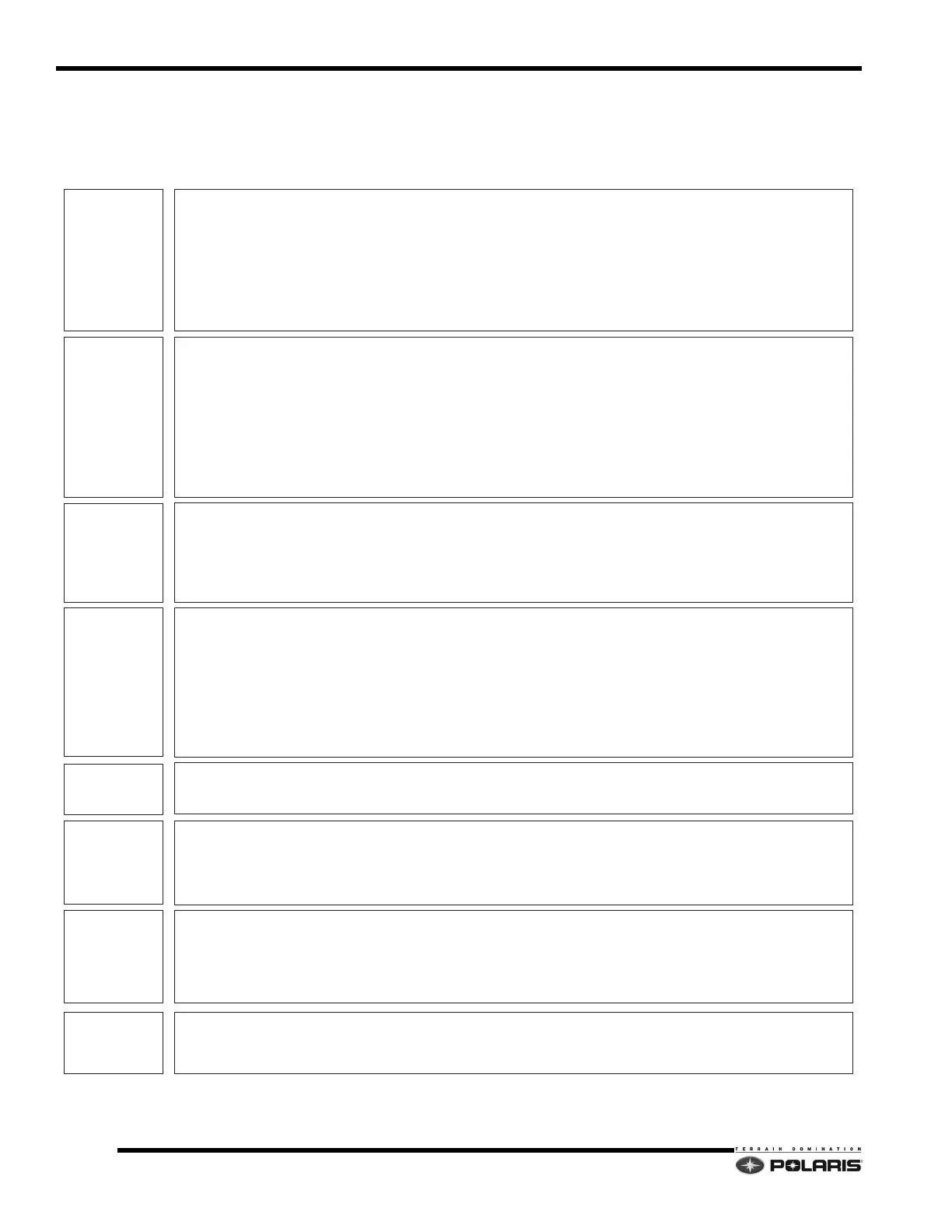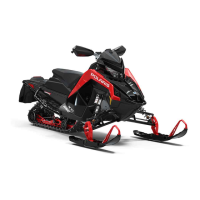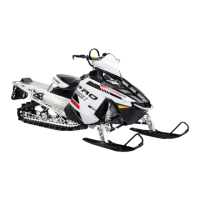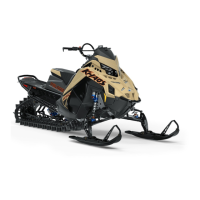STEP 1
Preliminary
Checks
DOCUMENT THE BASICS
1. VIN
2. Vehicle Miles
3. Issue(s)
4. Vehicle / Engine Modifications (Non-approved engine/vehicle modifications may cause detonation.)
5. Check unit against Unit Inquiry for any outstanding Service Bulletins or Team Tips
6. Type of fuel in the fuel tank / Fuel Selector Status
The fuel selector resistor plug must be set as outlined below based off of the type of fuel in the tank.
Fuel octane not known, < 91+ octane, or any 87+ octane oxygenated (ethanol, MTBE, etc, blended) fuel = 24 OHM Resistor
91+ octane non-oxygenated (non-ethanol) fuel = 160 OHM Resistor
STEP 2
Using
Digital
Wrench
DIGITAL WRENCH (DW)
1. Is DW the most current version? Check the DW update site (http://polaris.diagsys.com/modules.php?name=Downloads) to review and
download any available updates.
2. Connect DW to the vehicle. Are there any trouble code(s)? Document all of the trouble code(s), both historic and current. Use guided
diagnostics to troubleshoot current trouble code(s). Once repairs are made and trouble code(s) are cleared, do any return? Start the
engine and confirm trouble code(s) to not re-appear. If trouble code(s) re-appear, continue to troubleshoot issue using guided
diagnostics and Service Manual.
3. Review the ECU information for the vehicle. Does the ECU map match the vehicle’s configuration / fuel injector color and part
number? If not, reflash the ECU using the correct color-coded map / part number that matches the fuel injector color / part number
installed on the engine.
4. Is the vehicle subject to any Service Bulletins, or Team Tips where revised ECU reflash files have been made available? If so, verify
the Service Bulletin or Team Tip has been performed if required and the ECU information matches the revised reflash files.
STEP 4
Clutching
STEP 7
EGT
Sensor
EXHAUST GAS TEMPERATURE SENSOR
1. Using the data display tool in Digital Wrench, monitor the EGT sensor function while the engine is running (vehicle raised off the
ground on a sled lift or track stand) at or above 3,000 RPM.
2. Does the exhaust gas temperature value change with changing throttle lever input after running the engine for 60 seconds at or
above 3,000 RPM?
3. If the EGT value does not change, inspect the sensor wiring and connections. If the wiring and connections are good, replace the
sensor and retest.
STEP 8
Exhaust
System
EXHAUST SYSTEM
1. Remove aftermarket exhaust pipe(s) and/or non-Polaris tested silencer.
2. Check exhaust system for leaks, missing, over-stretched damaged springs, and worn out seals. Replace components as required.
3. Remove the resonator and shake. Replace resonator if shaking reveals loose internal baffle plates.
STEP 6
Air Leaks
AIR LEAKS
1. Check air box seals, foam, mounting boots, air box-to-hood interface. Verify air box assembly is not cracked/damaged.
2. Inspect throttle body boots for delaminating rubber, or if boots are torn. Verify boots are seated correctly against air box and
throttle body.
3. Does snowmobile have an aftermarket air intake kit installed? Remove the kit and reinstall original components.
4. Inspect engine crankcase seals/base gaskets, etc. for leaks.
STEP 4
Exhaust
Valves
EXHAUST VALVES
1. Inspect the exhaust valve solenoid vent system (discharge hoses) for leaks, plugged, kinked hoses, or icing. Repair or re-route hoses /
connections as required. Verify the outlet hose is not freezing during operation.
2. Start the engine in a well-ventilated area. Raise the track off the ground with a track stand. Rev the engine to clutch engagement
speed. Inspect the VES solenoid outlet hose for exhaust gas discharge. If no gas discharge is seen, the hoses may be plugged,
restricted, or the solenoid circuit is damaged.
3. Do the exhaust valves move as RPM increases? Test exhaust valve motion by installing a 1 inch piece of clear, fuel vent hose onto
each EV cap nut through the hole in each EV housing. Start the engine and increase the engine speed past 6,000 RPM to check for
proper valve operation.
4. Do both valves move at the same time / rate? If not, inspect one or both EV assemblies. Inspect for torn bellows, worn EV springs
and loose bellows cap nuts. Verify the EV base vent and cylinder holes are clean and free from carbon or heavy residue.
STEP 3
Fuel
System
FUEL SYSTEM
1. Check the fuel level in the tank.
2. Using Digital Wrench, verify the fuel injector supply voltage is 16VDC when the engine is running and while operating the snowmobile.
3. Using the appropriate fuel pressure gauge (see Service Manual), verify the fuel pressure when the engine is running and while
operating the snowmobile is 58 PSI (4BAR).
4. Verify fuel filter has been replaced as outlined in the periodic maintenance table. If it has not been replaced initially at 1,000 miles, and
then at 2,000 mile intervals, replace the fuel filter. Re-check fuel pressure.
STEP 5
Detonation Sensor
Fastener Torque
DETONATION SENSOR FASTENER TORQUE
1. The DET sensor fastener must be installed clean and dry and torqued to specification: (168 in.lbs./19 Nm).

